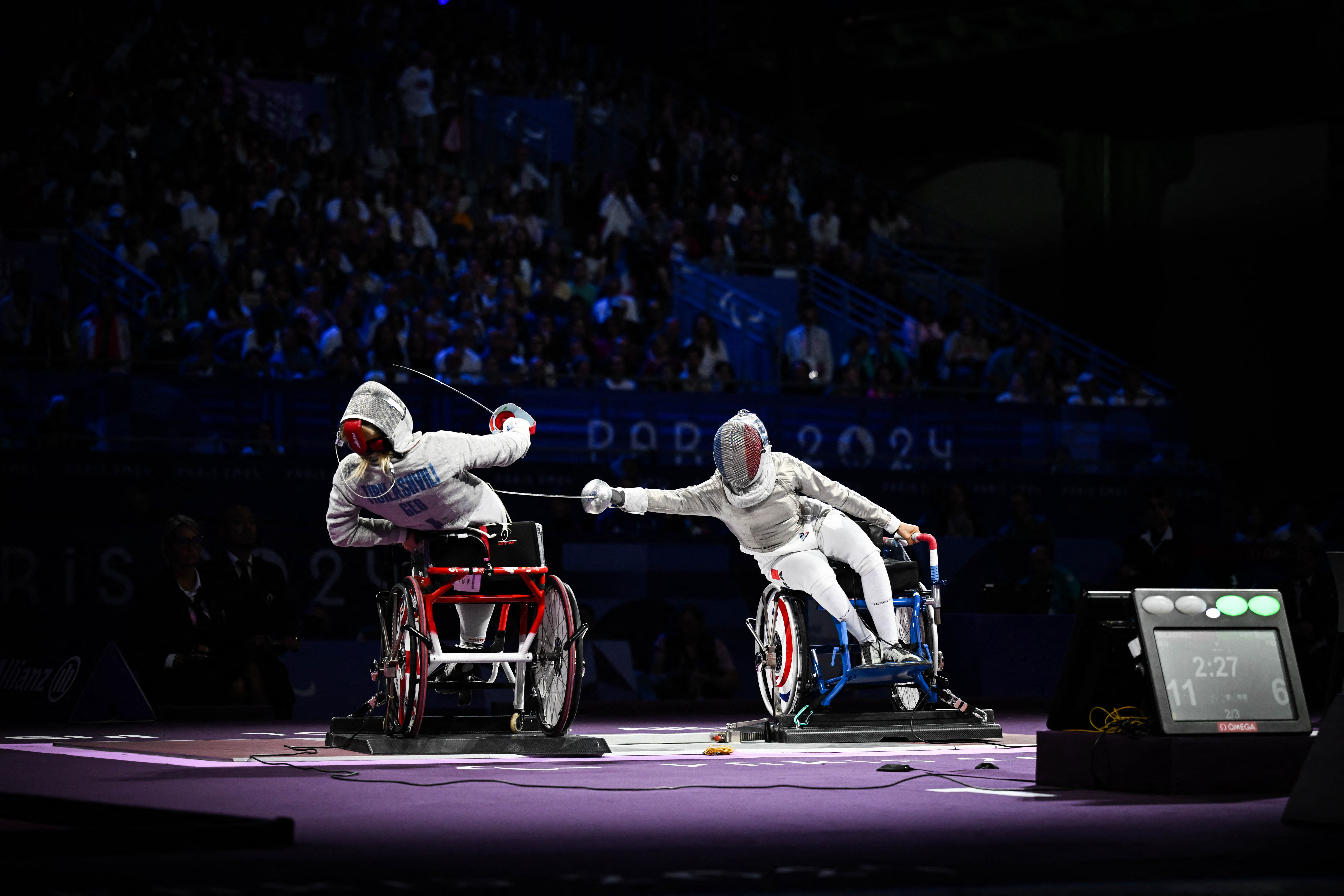Optimisation de la performance paralympique : de l’identification à l’obtention de la médaille
Mots-clés :
Jeux paralympiques, performance, interdisciplinarité, estimation de potentiel, accompagnement scientifiqueRésumé
Capitalisant sur une approche interdisciplinaire, le projet Paraperf a été retenu par le Programme prioritaire de recherche « Sport de très haute performance ». Il accompagne les fédérations françaises de badminton, handisport et de tir dans la préparation des équipes de France paralympiques. Tout au long de ces quatre ans, les équipes des treize laboratoires impliqués ont œuvré afin d’améliorer la connaissance des spécificités de la performance paralympique et de fournir des informations et outils fiables, utiles aux encadrements et aux parasportifs jusqu’aux Jeux de Paris et au-delà.
Références
Alberca, I., Chénier, F., Astier, M., Combet, M., Bakatchina, S., Brassart, F., Vallier, J.-M., Pradon, D., Watier, B. et Faupin, A. (2022). Impact of holding a badminton racket on spatio-temporal and kinetic parameters during manual wheelchair propulsion. Frontiers in Sports and Active Living, 4, 862760. https://doi.org/10.3389/fspor.2022.862760
Beldame, Y., Joncheray, H., Duquesne, V. et Richard, R. (2024). “They don’t really Care about my results, they prefer selling my life story.” Inspirational paralympians and sponsorship. Communication & Sport, 12(2), 194-209. https://doi.org/10.1177/21674795231158542
Berthelot, G. (2019). An integrative modeling approach to the age-performance relationship in mammals at the cellular scale. Scientific Report, 9(1), 418. https://doi.org/10.1038/s41598-018-36707-3
Berthelot, G., Len, S., Hellard, P., Tafflet, M., Guillaume, M., Vollmer, J.-C., Gager, B., Quinquis, L., Marc, A. et Toussaint, J.-F. (2012). Exponential growth combined with exponential decline explains lifetime performance evolution in individual and human species. AGE, 34(4), 1001-1009. https://doi.org/10.1007/s11357-011-9274-9
Brassart, F., Faupin, A., Hays, A., Watelain, E. et Weissland, T. (2023). Relationship of force–velocity profile between field sprints and lab ballistic or cycling ergometer for wheelchair basketball players. Applied Sciences, 13(13), 7469. https://doi.org/10.3390/app13137469
Ferez, S., Ruffié, S., Joncheray, H., Marcellini, A., Pappous, S. et Richard, R. (2020). Inclusion through sport: A critical view on paralympic legacy from a historical perspective. Social Inclusion, 8(3), 224-235. https://doi.org/10.17645/si.v8i3.2735
Gold, J. R.et Gold, M. M. (2007). Access for all: The rise of the Paralympic Games. Journal of the Royal Society for the Promotion of Health, 127(3), 133-141. https://doi.org/10.1177/1466424007077348
Le Toquin, B., Schipman, J., De Larochelambert, Q., Saulière, G., Duncombe, S. et Toussaint, J.-F. (2022). Is the visual impairment origin a performance factor? Analysis of international-level para swimmers and para athletes. Journal of Sports Sciences, 40(5), 489-497. https://doi.org/10.1080/02640414.2021.1999618
Ngo, M.-A.et Pantaléon, N. (2022). La mise sur liste ministérielle des sportifs valides participant à la performance paralympique : du caractère empirique au caractère systémique. Les cahiers de droit du sport (« Accompagnement des sportifs de haut niveau, Spécial »), 87-91.
Ngo, M.-A., Pantaleon, N., Richard, R., Joncheray, H. et Beldame, Y. (2023). Les spécificités des parasports mésestimées par le droit français. Amplitude du droit, 2. https://doi.org/10.56078/amplitude-droit.440
Pilon, F. et Prince, F. (2024). Does producing scientific articles lead to paralympic podiums? Biomechanics, 4(1), 123-143. https://doi.org/10.3390/biomechanics4010008
Richard, R., Burlot, F., Duquesne, V. et Joncheray, H. (2022). “I had a dream: It was to play the games”. Sports socialisation processes of French paralympic athletes. European Journal for Sport and Society, 19(2), 99-116. https://doi.org/10.1080/16138171.2021.1878438
Schipman, J., Gallo, P., Marc, A., Antero, J., Toussaint, J.-F., Sedeaud, A. et Marck, A. (2019). Age-related changes in para and wheelchair racing athlete’s performances. Frontiers in Physiology, 10. https://www.frontiersin.org/articles/10.3389/fphys.2019.00256
Schipman, J., Saulière, G., Le Toquin, B., Marc, A., Forstmann, N., Toussaint, J.-F. et Sedeaud, A. (2021). Involvement in multiple race events among international para and non-disabled swimmers. Frontiers in Sports and Active Living, 2, 608777. https://doi.org/10.3389/fspor.2020.608777
Schipman, J., Sauliere, G., Marc, A., Hamri, I., Le Toquin, B., Rivallant, Y., Difernand, A., Toussaint, J.-F. et Sedeaud, A. (2022). The COVID-19 pandemic impact on the best performers in athletics and swimming among paralympic and non-disabled athletes. The Journal of Sports Medicine and Physical Fitness, 62(12), 1605-1614. https://doi.org/10.23736/S0022-4707.22.13365-7
Tweedy, S. et Howe, P. D. (2011). Introduction to the paralympic movement. Dans Y. C. Vanlandewijck et W. R. Thompson (dir.), The Paralympic Athlete (1re éd., p. 1-30). Wiley. https://doi.org/10.1002/9781444328356.ch1

Publiée
Numéro
Rubrique
Catégories
Licence
(c) Copyright Nicolas Forstmann, Julien Schipman, Bryan Le Toquin, Jean-François Toussaint (Auteur) 2024

Ce travail est disponible sous licence Creative Commons Attribution - Pas d'Utilisation Commerciale - Pas de Modification 4.0 International.

